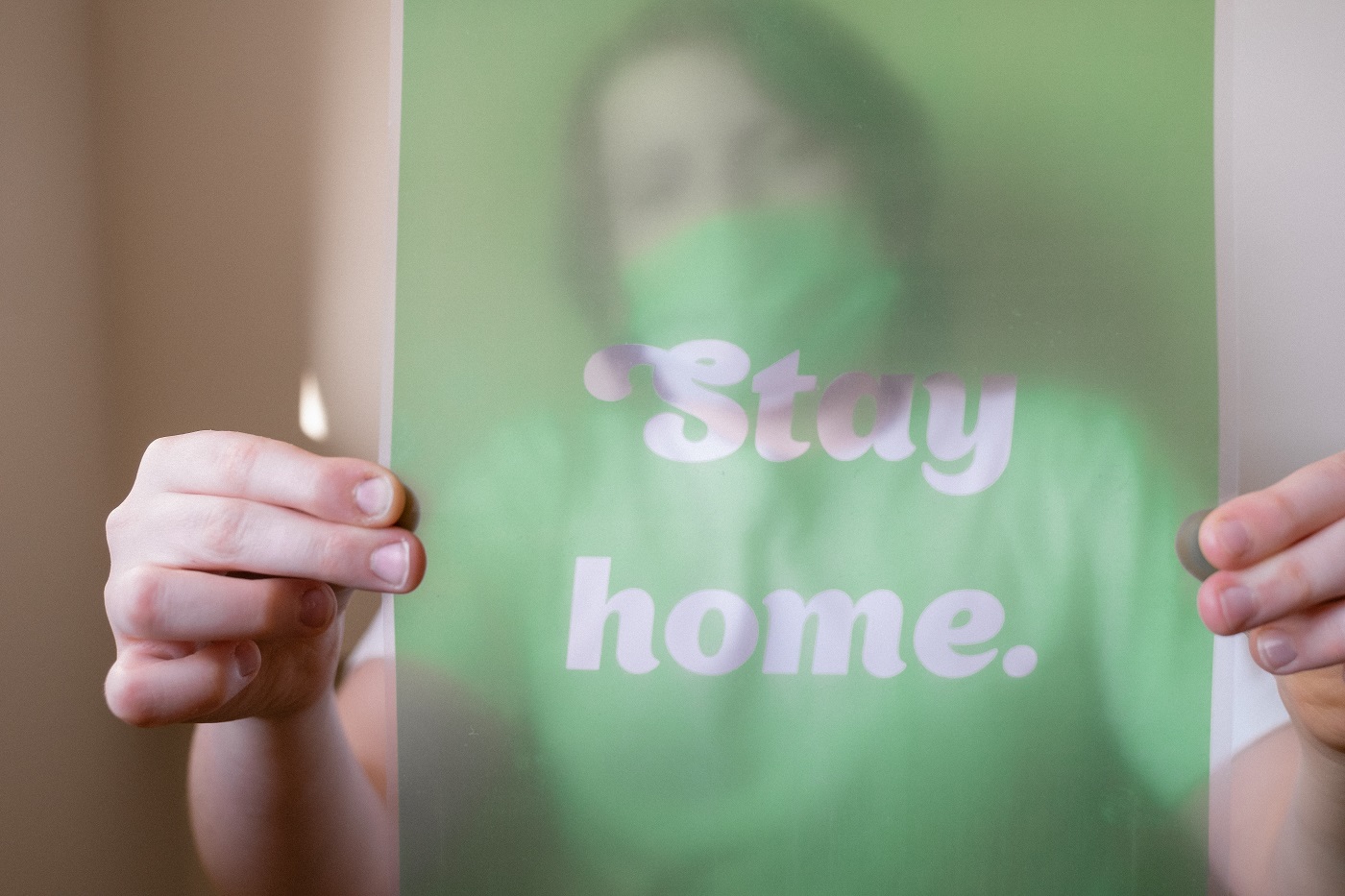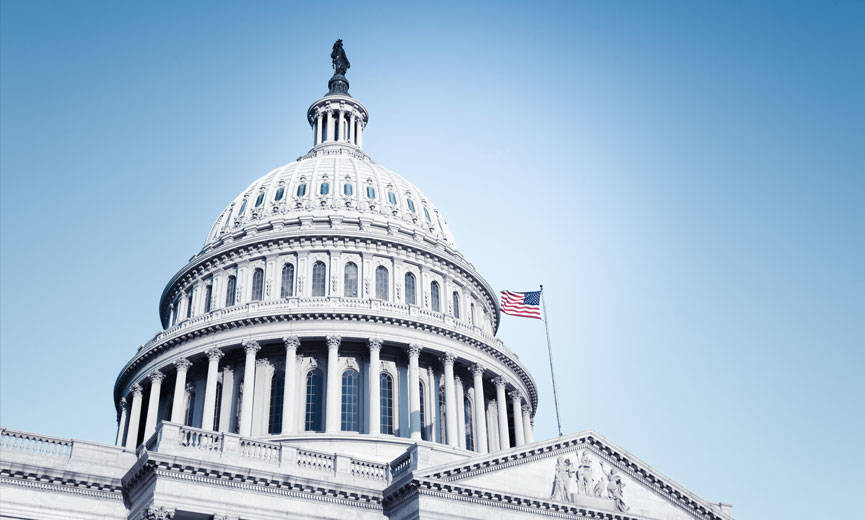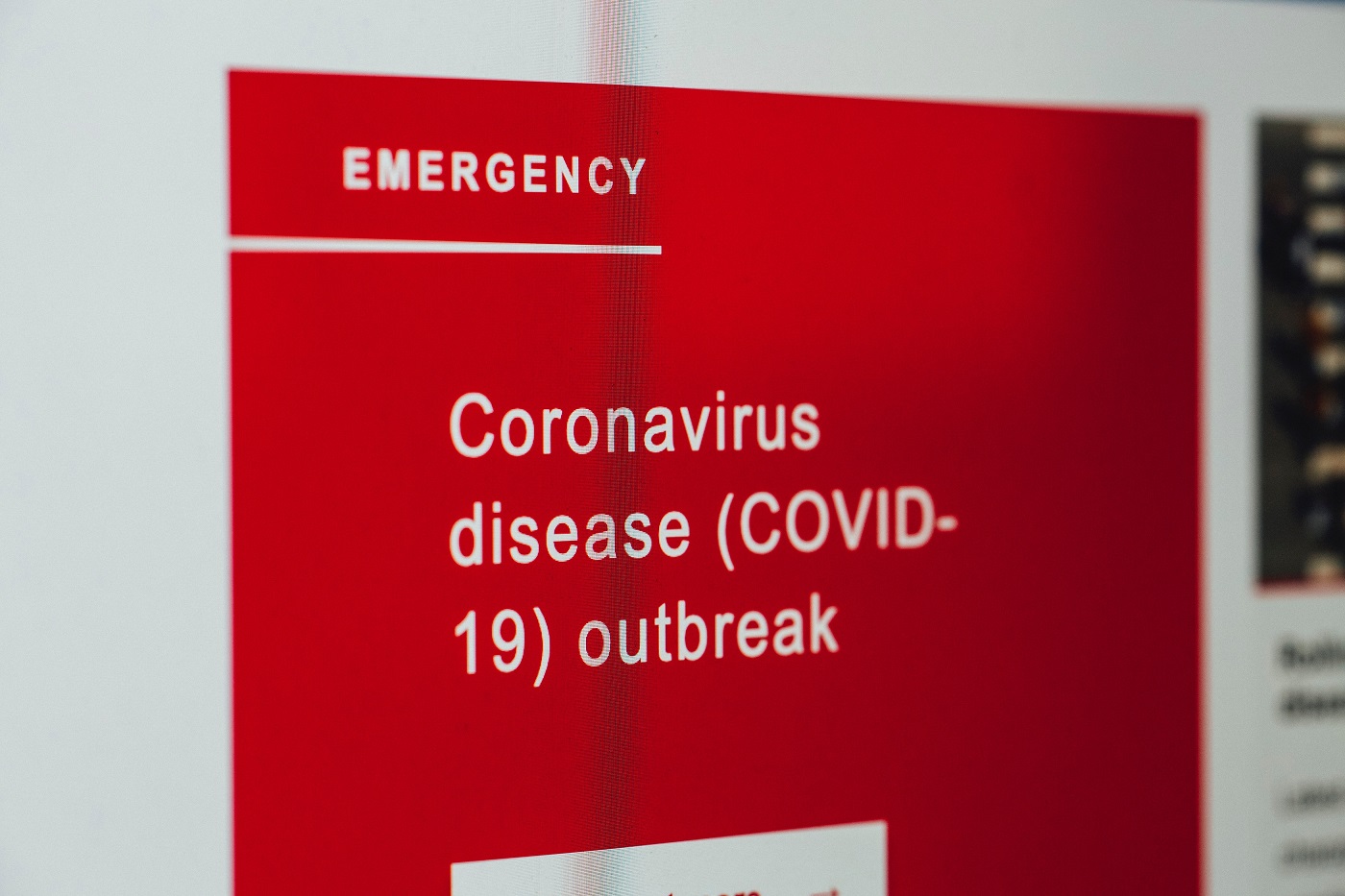




The Families First Coronavirus Response Act (FFCRA or Act) requires certain employers to provide employees with paid sick leave or expanded family and medical leave for specified reasons related to COVID-19. The Department of Labor’s (Department) Wage and Hour Division (WHD) administers and enforces the new law’s paid leave requirements. These provisions will apply from April 1, 2020 through December 31, 2020.
Generally, the Act provides that covered employers must provide to all employees:[2]
A covered employer must provide to employees that it has employed for at least 30 days:[3]
Covered Employers: The paid sick leave and expanded family and medical leave provisions of the FFCRA apply to certain public employers, and private employers with fewer than 500 employees.[4] Most employees of the federal government are covered by Title II of the Family and Medical Leave Act, which was not amended by this Act, and are therefore not covered by the expanded family and medical leave provisions of the FFCRA. However, federal employees covered by Title II of the Family and Medical Leave Act are covered by the paid sick leave provision.
Small businesses with fewer than 50 employees may qualify for exemption from the requirement to provide leave due to school closings or child care unavailability if the leave requirements would jeopardize the viability of the business as a going concern.
Qualifying Reasons for Leave:
Under the FFCRA, an employee qualifies for paid sick time if the employee is unable to work (or unable to telework) due to a need for leave because the employee:
Under the FFCRA, an employee qualifies for expanded family leave if the employee is caring for a child whose school or place of care is closed (or child care provider is unavailable) for reasons related to COVID-19.
Duration of Leave:
For reasons (1)-(4) and (6): A full-time employee is eligible for up to 80 hours of leave, and a part-time employee is eligible for the number of hours of leave that the employee works on average over a two-week period.
For reason (5): A full-time employee is eligible for up to 12 weeks of leave at 40 hours a week, and a part-time employee is eligible for leave for the number of hours that the employee is normally scheduled to work over that period.
Calculation of Pay:[5]
For leave reasons (1), (2), or (3): employees taking leave shall be paid at either their regular rate or the applicable minimum wage, whichever is higher, up to $511 per day and $5,110 in the aggregate (over a 2-week period).
For leave reasons (4) or (6): employees taking leave shall be paid at 2/3 their regular rate or 2/3 the applicable minimum wage, whichever is higher, up to $200 per day and $2,000 in the aggregate (over a 2-week period).
For leave reason (5): employees taking leave shall be paid at 2/3 their regular rate or 2/3 the applicable minimum wage, whichever is higher, up to $200 per day and $12,000 in the aggregate (over a 12-week period—two weeks of paid sick leave followed by up to 10 weeks of paid expanded family and medical leave).[6]
Tax Credits: Covered employers qualify for dollar-for-dollar reimbursement through tax credits for all qualifying wages paid under the FFCRA. Qualifying wages are those paid to an employee who takes leave under the Act for a qualifying reason, up to the appropriate per diem and aggregate payment caps. Applicable tax credits also extend to amounts paid or incurred to maintain health insurance coverage. For more information, please see the Department of the Treasury’s website.
Employer Notice: Each covered employer must post in a conspicuous place on its premises a notice of FFCRA requirements.[7]
Prohibitions: Employers may not discharge, discipline, or otherwise discriminate against any employee who takes paid sick leave under the FFCRA and files a complaint or institutes a proceeding under or related to the FFCRA.
Penalties and Enforcement: Employers in violation of the first two weeks’ paid sick time or unlawful termination provisions of the FFCRA will be subject to the penalties and enforcement described in Sections 16 and 17 of the Fair Labor Standards Act. 29 U.S.C. 216; 217. Employers in violation of the provisions providing for up to an additional 10 weeks of paid leave to care for a child whose school or place of care is closed (or child care provider is unavailable) are subject to the enforcement provisions of the Family and Medical Leave Act. The Department will observe a temporary period of non-enforcement for the first 30 days after the Act takes effect, so long as the employer has acted reasonably and in good faith to comply with the Act. For purposes of this non-enforcement position, “good faith” exists when violations are remedied and the employee is made whole as soon as practicable by the employer, the violations were not willful, and the Department receives a written commitment from the employer to comply with the Act in the future.
[1] Wage and Hour Division does not administer this aspect of the law, but notes that every dollar of required paid leave (plus the cost of the employer’s health insurance premiums during leave) will be 100% covered by a dollar-for-dollar refundable tax credit available to the employer. For more information, please see the Department of the Treasury’s website.
[2] Employers of Health Care Providers or Emergency Responders may elect to exclude such employees from eligibility for the leave provided under the Act.
[3] Employers of Health Care Providers or Emergency Responders may elect to exclude such employees from eligibility for the leave provided under the Act.
[4] Certain provisions may not apply to certain employers with fewer than 50 employees. See Department FFCRA regulations (expected April 2020).
[5] Paid sick time provided under this Act does not carry over from one year to the next. Employees are not entitled to reimbursement for unused leave upon termination, resignation, retirement, or other separation from employment.
[6] An employee may elect to substitute any accrued vacation leave, personal leave, or medical or sick leave for the first two weeks of partial paid leave under this section.
[7] The Department has issued a model notice:
https://www.dol.gov/sites/dolgov/files/WHD/posters/FFCRA_Poster_WH1422_Non-Federal.pdf
The U.S. Department of Labor has resources to help workers and employers prepare for the COVID-19 virus. Visit their website for more information: https://www.dol.gov/coronavirus


The following is a follow up to my March 12, 2020 article. It is NOT a substitute for CDC, New Jersey Department of Health or other governmental directive or guidance. The following is NOT a substitute for a healthcare professional’s advice. We are lawyers who represent Associations. We are NOT public health officials. We are NOT healthcare professionals. We may not be relied upon for public health or healthcare advice.


Among other things, the Centers for Disease Control and Prevention (the “CDC”) have noted that:
“Older adults and people who have severe underlying chronic medical conditions like heart or lung disease or diabetes seem to be at higher risk for developing more serious complications from COVID-19 illness. Please consult with your health care provider about additional steps you may be able to take to protect yourself”.
The CDC website: https://www.cdc.gov/coronavirus/2019-ncov/ provides information on how the virus spreads, symptoms, steps to prevent illness, what to do if you are sick along with additional information and answers to frequently asked questions “FAQs”. Go to the CDC’s website regularly for updated information.
The CDC advises that the virus is thought to spread mainly from person-to-person between people who are in close contact with one another. Given this, until the CDC provides information that suggests otherwise, Associations, especially Age Restricted Communities, would be wise to minimize and avoid in-person gatherings. Association meetings may be held via teleconference and similar arrangements. These arrangements allow for remote participation by upwards of 1,000 people, far fewer than the typical Association meeting attendance.
Panic is never the answer, but Association members and managers must keep themselves informed. Reasonable measures will allow Associations to continue to function while mitigating risk and perhaps assisting in fighting the virus.


We are regularly asked how Associations can save money on attorney fees. Some argue: “go with an hourly agreement, that way the Association can control the attorney’s work.” Others might argue: “flat-fee retainer agreements are best; budgeting will be easier.” Still others might say: “a contingent fee arrangement is best, that way the Association won’t have to pay unless the attorney wins.”
While these answers and others may be right in certain circumstances, the real answer, sure to save attorney fees in virtually every Association, is: “Hire strong management, pay fair management fees and use management personnel properly.”
Seems like a simple answer but, counterintuitively, at a time when few manager resumes are circulating, management fee proposals are bent on a race to the bottom. I do not know what is driving this. Board demands? Desire for market share? Ability to sell ancillary services? Increased technology usage? A combination of these factors? Regardless, isn’t it a matter of pay management today or pay way more in legal tomorrow? Worse, isn’t it a matter of pay management today or pay way more in legal, audit, engineering, contractors etc. tomorrow?
Experienced, trained and dedicated managers are effective. Among many other things, they help with risk management and insurance; specifications, bidding and moving projects forward, managing the budget, collecting delinquent fees, managing personnel, maintaining books and records, resolving disputes, etc., etc.
Failure to properly deal with risk management leads to more insurance claims. Failure to properly deal with insurance claims means coverage denial. Failure to properly deal with specifications, bidding and project management leads to flawed projects, cost-overruns and lawsuits. Failure to properly budget and collect Association fees leads to lack of reserves, special assessments, large increases, borrowing and collection lawsuits. Failure to properly manage human resources leads to unnecessary costs, work not getting done and lawsuits. Failure to properly maintain books and records leads to an inability to manage, member suspicion and lawsuits. Failure to promptly address disputes leads to lawsuits.
We do not own a management company, but we work with most of them. Associations should be keenly aware that the management fee supports the manager and much more. When considering a management company proposal, the cost should be one selection factor but not the primary factor. We perform great legal work and appreciate Associations paying our legal fees, but we encourage Associations to hire strong management, pay fair management fees and use management personnel properly.

Pat McGlone was invited to speak at NJICLE’s 2019 Community Association Law Summit, presented in cooperation with the New Jersey State Bar Association Real Property, Trust & Estate Law Section and the Community Associations Institute-New Jersey Chapter. Pat presented an overview of insurance issues that community associations should be aware of, from the purchase of insurance through the final payment of a claim.

Francis J. McGovern will be a presenter at the program, “Fundamentals of Community Association Law”, presented in cooperation with NJSBA Real Property Trust and Estate Law Section and the New Jersey Chapter of the Community Associations Institute.
Community associations constantly confront a broad spectrum of issues in managing the affairs of the residents of condominiums and other planned communities. There is no shortage of problems and concerns arising from common interest ownership due to the mandatory membership of owners in associations, governance by an elected board, shared amenities and services, and the obligation to follow rules and regulations and to pay common expense assessments. The tools to resolve the legal issues faced by these associations span several legal practice areas– business, real estate, litigation, environmental, bankruptcy, collections, administrative law, to name just a few.
In this program (which has been brought back due to popular demand), a highly experienced panel of community association law experts will introduce the fundamentals of community association law, and give a foundation and resources to deal with issues confronted by associations, their governing boards, owners, and other professionals, such as managing agents, accountants, and engineers.

In April 2019, Governor Murphy signed Assembly Bill A5002/Senate Bill S3414 into law. This new law extends an Association’s six-month assessment lien priority over mortgages to HOAs. Most of you know that previously only Condominium Associations enjoyed this six-month assessment lien priority (the provisions of this law do not apply to Cooperatives).
Despite some internally conflicting language, this new law also seems to make the six-month per year priority cumulative for five years. Theoretically, if an Association records a new lien every year for five years, thirty months of assessments will have priority over the mortgage.
Associations must keep in mind that, although liens protect Associations in bankruptcy and lien priority protects some assessments in case of foreclosure, liens are passive tools that often do not get the debtors paying again.
At McGovern Legal we negotiate payment plans and use Money Judgments, Wage Executions, Bank Levies, Rent Levies, Rent Receivers, Quit Claim Deeds, Foreclosure Actions and other tools to get the assessments, “the lifeblood of the Association” flowing again.
Thank you to CAI-NJ’s Legislative Action Committee for its work on legislation impacting Associations.

Damon M. Kress, Esq. presented “Developments in Construction Law and Litigation” at the 2018 Community Association Law Summit at the NJ Law Center in New Brunswick, NJ on November 14, 2018.

fmcgovern@theassociationlawyers.com
The 2018 CAI-NJ Conference and Expo was held on Thursday, October 18, 2018. The theme of the event this year was 40 Years of Primetime with CAI-NJ CAI-LAND. McGovern Legal Services participated with a prize-winning “All in the Family” themed booth with props and an authentic display of 40 years of primetime tv. Many attendees stopped by to take a rest on our sofa to watch an episode of one of television’s most popular sitcoms. The Conference and Expo was a great success with exhibitors, board members, and managers in attendance networking while enjoying great food and creative booth displays. McGovern Legal Services would like to thank everyone who visited our booths.
Attorneys from McGovern Legal Services shared their knowledge of the issues facing associations today such as construction defects, litigation, collections, transition, and more. We counsel association boards to seek out common sense solutions to these issues.